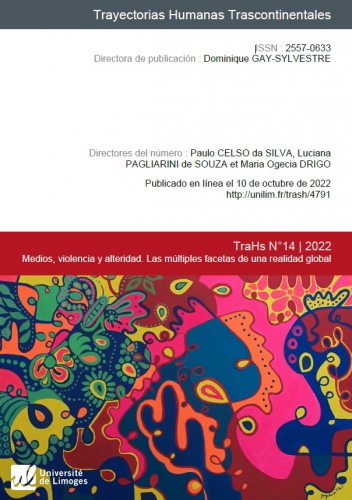Parece haberse convertido en un lugar común hablar de violencia e inseguridad en nuestra vida cotidiana. Las noticias que nos llegan, al mismo tiempo que refuerzan esta sensación, naturalizan guerras, asesinatos, agresiones, cuando nos exponen insistentemente a detalles e imágenes con las que, tras el impacto inicial, nos familiarizamos. La rapidez con la que se publican noticias y hechos en los medios, siempre en busca de la novedad y la exclusividad, deshumaniza las relaciones, privilegiando el hecho en detrimento del sufrimiento de las personas involucradas, ya sea en guerras, tragedias ambientales o familiares. En busca de historias o testimonios en momentos de extrema fragilidad, se racionaliza algo que ni siquiera fuera posible procesar internamente. Lo mismo ocurre con familiares que han perdido a sus mayores en residencias de ancianos, obligados a exteriorizar su dolor ante espectadores ávidos de imágenes y noticias, como vimos durante la fase más aguda de la pandemia en los medios de comunicación de varias partes del mundo. No fue una constante en los medios porque, en algunos territorios, se prohibieron, censuraron y autocensuraron noticias y hechos sobre la pandemia e incluso hablar de pandemia para no informar y denunciar los hechos.
Corresponde también a los medios “elegir” cuáles serán o no las noticias del mañana. Y, a menudo, esa elección es global, las agencias de noticias determinan qué es y qué no es importante para las personas en sus ubicaciones. Las múltiples formas de violencia se simplifican cuando la prensa privilegia solo los delitos. Sin embargo, para las ciencias sociales sigue siendo un desafío comprender el fenómeno de la violencia y las múltiples facetas que encuadran bajo esta etiqueta. Todavía debemos considerar, necesariamente, la existencia de numerosos componentes en la escena violenta: la víctima, el agresor, los familiares y amigos de ambos, los policías y todo el público que consume los hechos cotidianos en sus múltiples plataformas mediáticas, así como las propias plataformas. ¿Quiénes son las víctimas de la violencia? Y tus agresores, ¿por qué lo hacen? Dialécticamente, víctimas, agresores, espectadores y medios de comunicación se dejan huellas unos a otros, en tanto participan de un mismo proceso socialmente construido.
Considerando que el diálogo de las culturas debe ser una de las características de nuestro tiempo, vale la pena subrayar que sería necesaria una nueva forma de vivir la alteridad, con la afirmación de la exterioridad del otro que acompaña a su reconocimiento como sujeto. Este tiempo clamaría por la superación personal, lo que implicaría la epifanía del otro. En este aspecto, la pregunta que surge es ¿cómo los medios de comunicación, que en un sentido amplio van desde las relaciones interpersonales hasta los procesos masivos, pueden contribuir a propagar el respeto por el otro, por lo diferente, por lo extraño, por lo extranjero?
El tema “Medios, violencia y alteridad. Las múltiples facetas de una realidad global” está en línea con los temas de investigación desarrollados por la Red Internacional de América Latina, Europa y el Caribe (ALEC), que busca trabajar por los derechos humanos; construir conocimiento especializado sobre las realidades y formas de discriminación que afectan a las poblaciones vulnerables, en los diferentes continentes y territorios en los que opera, en la familia, en el trabajo, en la sociedad, en el ámbito educativo, sanitario, social y en el contexto de la diversidad, el medio ambiente, de los conflictos; contribuir al cambio cultural y social, así como asesorar y apoyar la construcción de políticas públicas a través de alternativas de solución viables y prácticas diferenciadas entre hombres y mujeres, basadas en el respeto, la equidad, el reconocimiento y desarrollo de derechos, el empoderamiento, la resiliencia y la inclusión de poblaciones vulnerables, entre otros.
En este contexto, son bienvenidos los artículos relacionados con la actual crisis mundial, social y financiera a causa de la pandemia. Sin embargo, buscamos enfocarnos más ampliamente en el fenómeno mediático como una experiencia cotidiana en la que poderes hegemónicos
